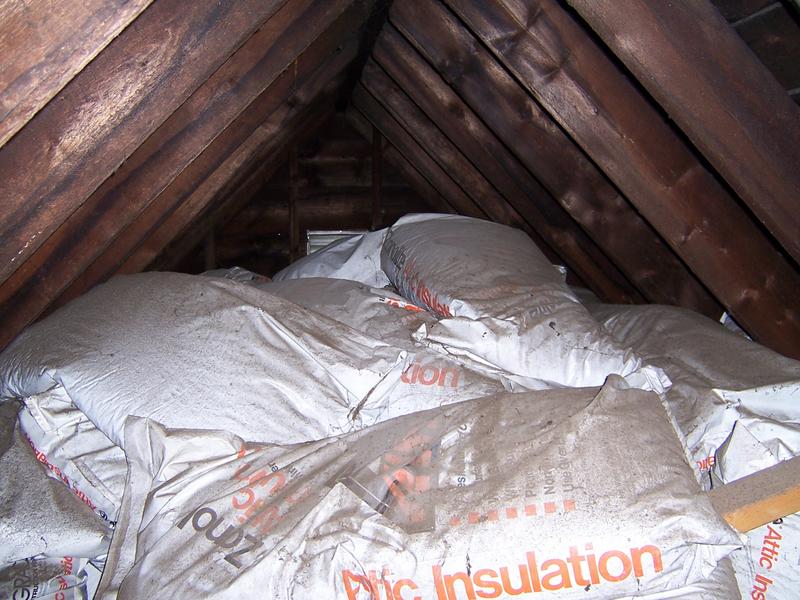If you like the image with the bags of insulation in the attic, perhaps you’ll enjoy these images of an attic that I inspected that was loaded high with bags of vermiculite insulation…
David,
What did you determine the R-Value to be??? 
Remember that stuff very well. And hell, the insulation factor was there, just not very well distributed yet. :mrgreen:
Here’s data if you are interested…
http://www.na.graceconstruction.com/vermiculite/download/MasInsul3503_1.pdf
1
:)![]()
Inconclusive…
No attic data supplied.
Product description states for wall installation.
So… is it a defect if found in attics???
:twisted::mrgreen:
BTW… I was being facetious. ![]()
Most of the Vermiculite came from the Libby mines. When I used the product as a young fellow, most if not all of the aesbestos content had been removed. Mid 1970’s.
http://www.grace.com/About/EHS/Libby/Zonolite.aspx:)
**Zonolite Attic Insulation Safety Facts **
There have been reports concerning the association of trace amounts of asbestos fibers with Zonolite® Attic Insulation. This product–discontinued by Grace in the early 1980s for economic reasons–was made with expanded vermiculite originating from the Libby, Montana deposit.
As part of the manufacturing process, Grace took steps to remove asbestos fibers from the vermiculite used in Zonolite® Attic Insulation.
- Asbestos fibers were separated from the vermiculite ore at the mine.
- The vermiculite was further processed at expanding plants to remove remaining asbestos to the maximum extent feasible.
In the 1970s, the government began regulating the use of products containing intentionally added commercial asbestos, such as fireproofing insulation. As a responsible manufacturer, Grace conducted its activities in compliance with these regulations.
In connection with the development of the National Emission Standard for Asbestos, issued in 1973, the association of asbestos fibers with vermiculite in the Libby ore was extensively discussed with the EPA staff.
In the late 1970s, Grace conducted air-sampling tests of Zonolite® Attic Insulation. Designed to replicate the installation procedure in typical homes, air sampling was conducted prior to, during and after installation. The results:
- Asbestos fibers in the attic space during installation were at levels well below what was then considered a permissible lifetime occupational exposure.
- Air sampling indicated no asbestos fibers were detected in the attic within six hours after installation.
Based on these results, Grace concluded that no unreasonable risk of injury was posed to a homeowner installer.
Zonolite® Attic Insulation was primarily used in older homes to retrofit or add to existing insulation. It was seldom used in new home construction. We believe now, as we did during the time we sold the product, that there is no unreasonable risk of injury or illness associated with the presence of this insulation in homes. Homeowners who have Zonolite® Attic Insulation in their homes should leave it in place. Homeowners who have questions about the product can contact Grace at 617-876-1400 (in Massachusetts) or 800-354-5414 (elsewhere in the U.S.). For more information, please visit the web site www.libbyissues.com.
My off the cuff guess was R-108 in places! ![]()
I see vermiculite almost weekly in my area. Have delivered many a sample to the lab for testing. Very rarely find asbestos, but my clients feel better about it being in the attic.
You are being too serious Jeff.
I write up all Zonolite (Vermiculite). R-Value is not a factor.
See post #27. ![]()
prolly very confusing with those extra digits ![]()
Barry, what extra digits are you talking about?


